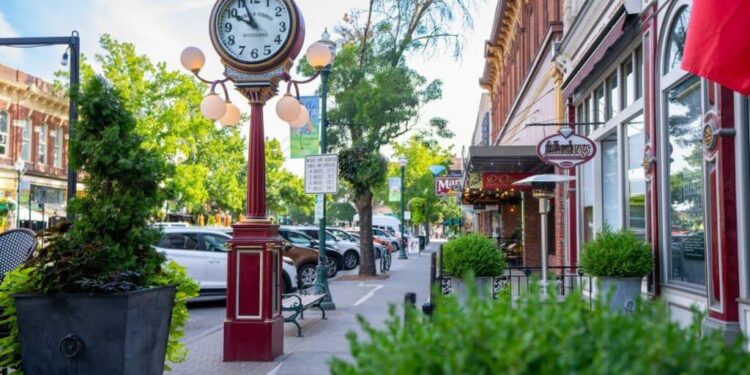Walla Walla 2050: Envisioning Sustainable Development and Environmental Care in Washington State
Nestled in the heart of Washington State’s agricultural expanse, Walla Walla is setting its sights on a future that harmonizes growth with environmental preservation. The Washington State Department of Ecology has introduced the forward-thinking “Walla Walla 2050” initiative, a detailed framework aimed at tackling the region’s escalating environmental issues while fostering sustainable progress. By prioritizing water management, habitat conservation, and climate adaptability, this comprehensive plan aspires to ensure that Walla Walla flourishes economically while safeguarding its natural legacy for future generations. Community members are encouraged to participate in vital discussions about achieving these objectives, marking a significant turning point in shaping the trajectory of Walla Walla’s development. This article delves into the essential elements of the “Walla Walla 2050” initiative, its importance for local inhabitants, and its broader implications for ecological sustainability across Washington State.
Walla Walla’s Vision for Sustainable Growth by 2050
As we look toward 2050, planning for sustainable growth in Walla Walla necessitates weaving environmental accountability into every aspect of development. The proposed strategies aim to enhance local natural resources while accommodating an increasing population. Notable initiatives include:
- Sustainable Infrastructure: Investing in parks, green roofs, and permeable surfaces to manage stormwater effectively and mitigate urban heat.
- Alternative Energy Solutions: Shifting towards wind power, solar energy, and biomass sources to sustainably meet community energy demands.
- Civic Participation: Cultivating a culture of conservation through educational initiatives that empower residents to take proactive measures.
The management of water resources remains paramount due to the region’s agricultural heritage. The vision promotes an integrated approach to watershed stewardship by leveraging technology alongside community feedback for equitable distribution and conservation efforts. To facilitate this vision further, several pilot projects are set to launch in 2025 with highlights including:
| Project Title | Description | Anticipated Outcome |
|---|---|---|
| Smart Irrigation Program | The use of sensor technology within agriculture. | Aim to decrease water consumption by up to 20% across farms. |
| Civic Rewilding Initiative | The restoration of native habitats within urban areas. | Aim at boosting biodiversity and improving air quality. |
Advancing Water Management: Navigating Challenges and Opportunities in Walla Wala
Pioneering innovative approaches is crucial as Walla Wall confronts significant challenges related to water management while seizing new opportunities. Unique issues surrounding water scarcity—intensified by climate change impacts alongside agricultural needs—demand a diverse strategy ensuring sustainable usage practices. Local authorities are collaborating with stakeholders on implementing advanced technologies designed not only for efficient resource use but also enhancing resilience within supply systems through methods such assmart irrigation systems, rainwater collection techniques, along with recycled water programs aimed at reducing reliance on groundwater sources.
Apart from technological advancements; education plays an essential role in raising awareness regarding water conservation among residents. Key strategies encompass:
- Workshops & Seminars : Offering training sessions focused on effective water-saving methods tailored for both households & businesses .
- Collaborations : Partnering with educational institutions encouraging student involvement around responsible stewardship .
- Incentive Programs : Providing rewards or rebates when adopting efficient appliances or landscaping solutions .
Additionally , exploring funding avenues & grants will support these endeavors ensuring not just meeting immediate needs but positioning itself as leaders showcasing best practices other communities can emulate . By nurturing partnerships between public entities , private sectors , & citizens alike ; it sets forth aspirations where collective responsibility drives innovation towards sustainability goals .< / p >
Community Participation & Resilience: Building A Sustainable Future Collectively
The success envisioned by 2050 relies heavily upon robust community engagement empowering individuals actively participating shaping sustainable methodologies moving forward . In upcoming years emphasis will be placed forging alliances amongst government bodies , enterprises ,& locals guaranteeing inclusivity throughout decision-making processes paving pathways numerous initiatives enhancing ecological responsibility combating climate change effects simultaneously.< / p >
- < strong >Educational Initiatives : Creating workshops/resources promoting eco-friendly lifestyles.< / li >
- < strong >Volunteer Clean-Up Drives : Mobilizing communities regularly maintaining parks/waterways cleanliness.< / li >
- < strong >Public Surveys : Collecting insights guiding future policy developments concerning environment matters.< / li >
An additional focus directed towards resilience aims counteracting adverse consequences stemming from climatic shifts assuring infrastructure/ecosystems remain fortified against unpredictability ahead creating comprehensive frameworks guided primarily via local input prioritizing :< / p >
Action < th style ="text-align:left;" > Goal >Emergency Preparedness Workshops Equip citizens better respond threats posed environment Final Thoughts
As we approach the year 2050,the ambitious plans laid out under “WALLAWALLA” reflect commitment towards fostering both economic prosperity alongside ecological integrity.The outlined strategies promise reshape not only physical landscape but also legacy left behind generations yet unborn.As challenges arise due changing climates/urbanization pressures,this blueprint serves dual purpose guiding action whilst rallying stakeholders together ensuring vibrant resilient hub amidst evolving realities.Watching closely how narrative unfolds will be crucial engaging ongoing dialogues about future prospects unique gem nestled withinWashington state.






























